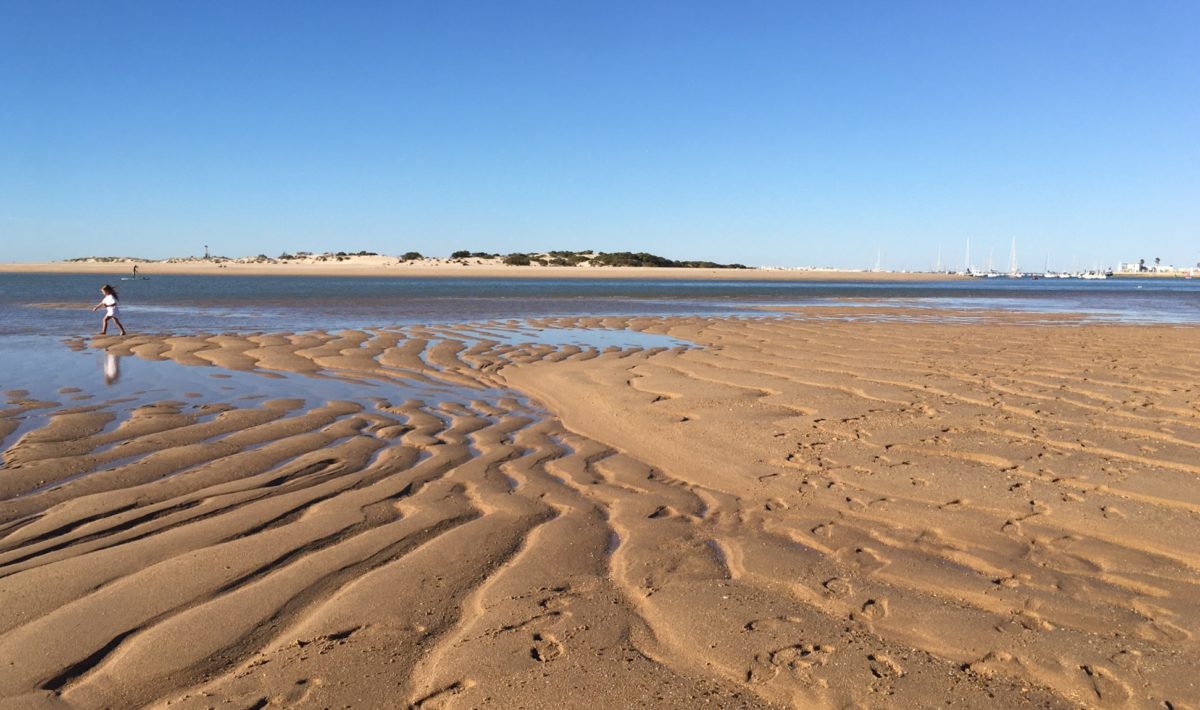The Costa del Sol, the Costa de la Luz, the Costa Tropical, or the Costa de Almería have in common that they belong to Andalucía. This region of southern Spain has almost a thousand kilometers of coastline, a distance greater than that separating Paris from Berlin, but with more sun. This immense coastline bathed by the Mediterranean Sea and the Atlantic Ocean is dotted with impressive beaches and dreamy coves, each with its own personality and uniqueness. For decades they have been an international tourist attraction, a paradise where to retire and, with the rise of teleworking, now also an object of desire for those who work remotely.
In almost a thousand kilometers Andalucía can boast of a diversity of different beaches: wild beaches of white sand dunes; Lively urban beaches, idyllic coves, family beaches, dark sand beaches or rocky beaches between cliffs.
We already know that it is difficult to choose, so we propose a selection of ten beaches in Andalusia that you deserve (now more than ever) and that you cannot miss.
Bolonia (Tarifa,Cádiz)

If you had to choose a single beach on the coast of Cádiz, Bolonia beach would be, with certainty, one of the favorites. It is a wild beach with fine white sand, dunes, crystal clear water and direct views of the Strait of Gibraltar. It is surrounded by pine forests and living history because at its access are the Roman ruins of Baelo Claudia, archaeological remains in the open air from that time. They can be visited and in summer night plays are held there.
There are several restaurants and a parking area at the entrance to the beach. By the way, Bolonia is 4km long and 70 meters wide and is a 15-minute drive from Tarifa
In July and August it is better to go on weekdays because there are fewer people. It is possible to do hiking trails between pine forests, cliffs and the beach. The route that goes in the direction of Punta Paloma crosses large pools of water with mud with natural beneficial properties for the skin that can be enjoyed at low tide.
Cala de los Alemanes (Zahara de los Atunes, Cádiz)
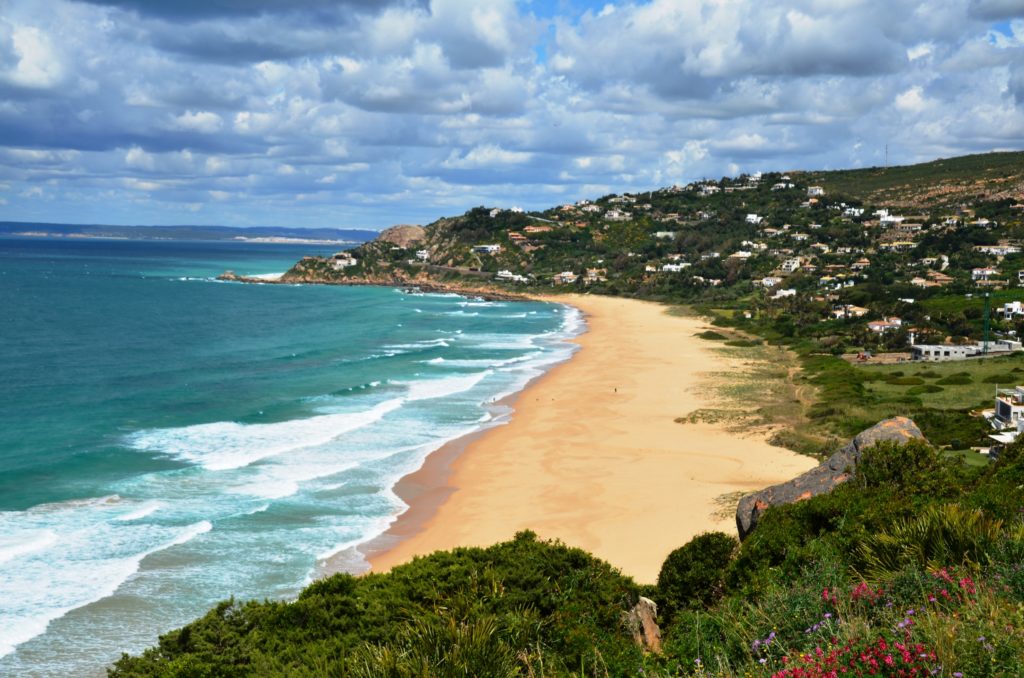
Very close to the beautiful town of Zahara de los Atunes is Cala de los Alemanes, a beach of fine golden sand at the foot of a mountainside with luxurious villas. Located next to the Camarinal lighthouse, Cala de los Alemanes is one of the quietest beaches all year round thanks to the few parking areas that exist in the environment. In this paradise of calm and nature there are no shops or restaurants, so those lucky enough to find parking must be provided with food and water for a pleasant day on the beach.
The name of this beach is due, according to numerous sources, to the fact that some Nazi Germans settled in this area of the coast at the end of the war. In the 1940s many German tourists settled permanently. This beach served during the Second World War as a place of surveillance and supply for the German ships that sailed through the Strait of Gibraltar, in fact, today the bunkers remain visible on the beach.
Playa de la Caleta (Cádiz)

This small urban beach located in the historic center of Cádiz -the oldest city in the West- is the most genuine in the municipality and one of the most photographed by tourists and local people. It is the beach that people who live in the center of the city usually go to. It is flanked by two castles (Castillo de Santa Catalina and Castillo de San Sebastián) and is the favorite place for people from Cadiz to watch the sunset due to the spectacular effect of the sun dipping into the sea.
It is small -500 meters in length- and has a family atmosphere and scenes from various cinema films have been shot there. One of its hallmarks are the numerous fishing boats that are anchored and that leave idyllic images at low tide.
In short, a day at the beach in La Caleta is an exercise in immersion in the life of the people of Cadiz. Of course, in summer it is preferable to go outside the weekend because it is crowded with people.
Accommodation and where to telework in the province of Cádiz.
Playa de La Herradura (Almuñécar, Granada)
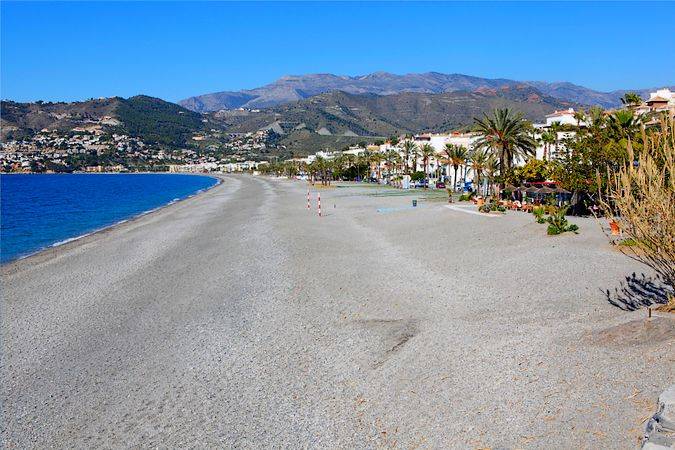
It is the main beach of the small coastal town of La Herradura, on the Costa Tropical. It is a beach with dark sand, pebbles and turquoise waters ideal for surfing, kayaking, snorkeling and diving. In fact, if you dive you will be able to see underwater archaeological remains of the Invincible Armada that was shipwrecked in those waters in 1562.
La Herradura beach is surrounded by mountains that protect it from the winds coming from the Sierra Nevada and promote a subtropical climate. This 2 km long and 40 meters wide beach owes its name to the unique horseshoe shape of its bay.
Accommodation and where to telework in the province of Granada.
Playa de los Muertos (Carboneras, Almería)
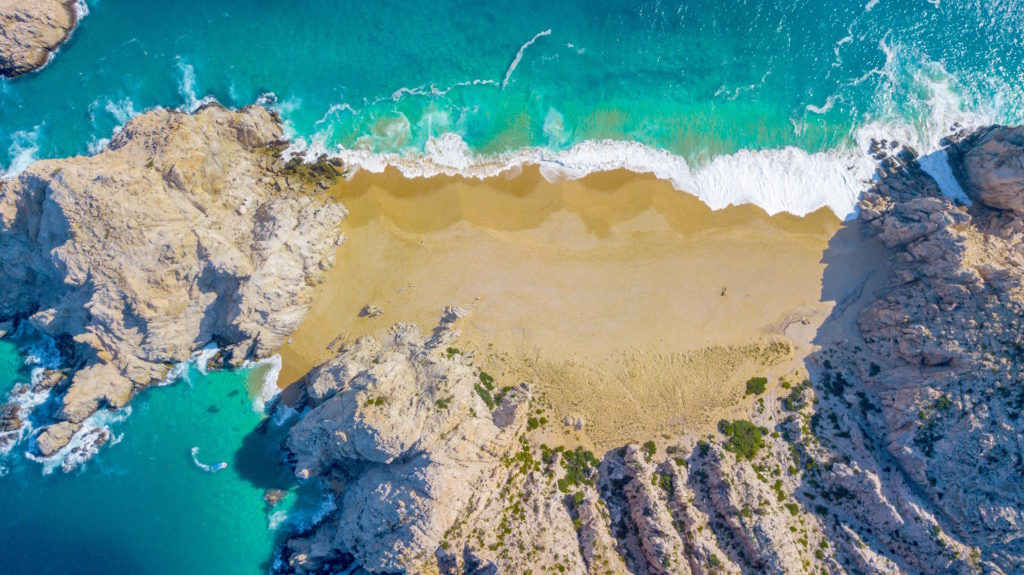
It is one of the most impressive virgin beaches in Cabo de Gata. Surrounded by vertical walls of dark rock, to get there you have to descend a cliff along a 700 meter long path of medium difficulty. This information must be taken into account if you are thinking of going with children or heavily loaded with beach gear (chair, umbrella, refrigerator, etc). About 15 minutes later, you will find that the effort has been worth it.
Once you have passed this, the beach is of white sand, pebbles and crystal clear waters in which a varied and colorful marine fauna lives, so wearing diving goggles is worth it.
Los Muertos beach owes its name to the fact that the lifeless bodies of the shipwrecks that occurred in the area were dragged by the sea currents.
Playa del Sombrerico (Mojácar)
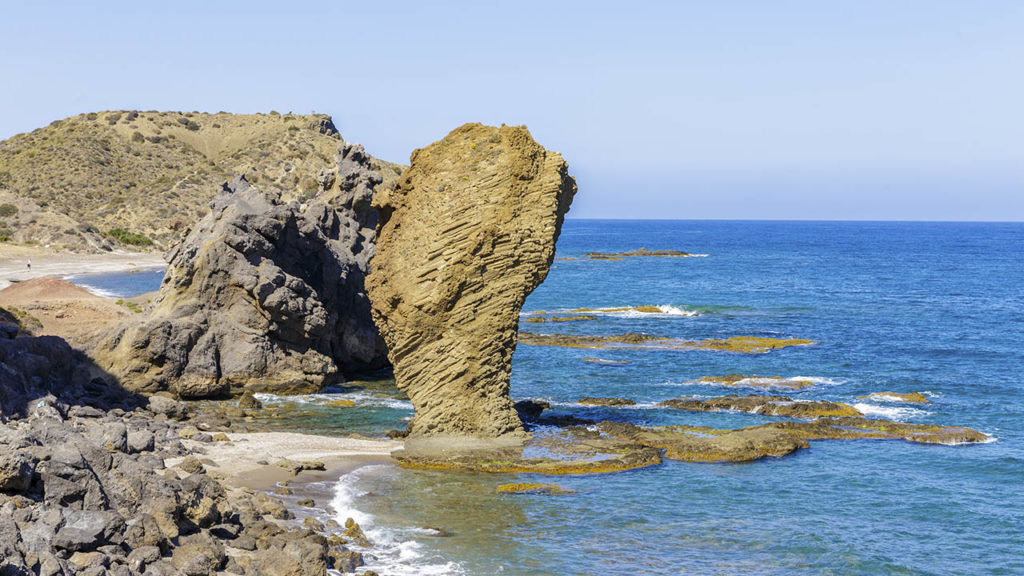
On this beach, less than 1 km long, volcanic rock and gray and golden sand alternate. It is far from the city, hence its consideration as a wild beach, and has been the scene of the cinema in films such as Treasure Island, starring Orson Welles. This beach takes its name from the immense rock that sticks out of the water, an image repeated on tourist postcards.
The closest road to this beach to get there by car is the AL-5105 and it can also be reached by bus from Mojácar.
Accommodation and where to telework from in the province of Almería.
Playa Nueva Umbría (Lepe, Huelva)
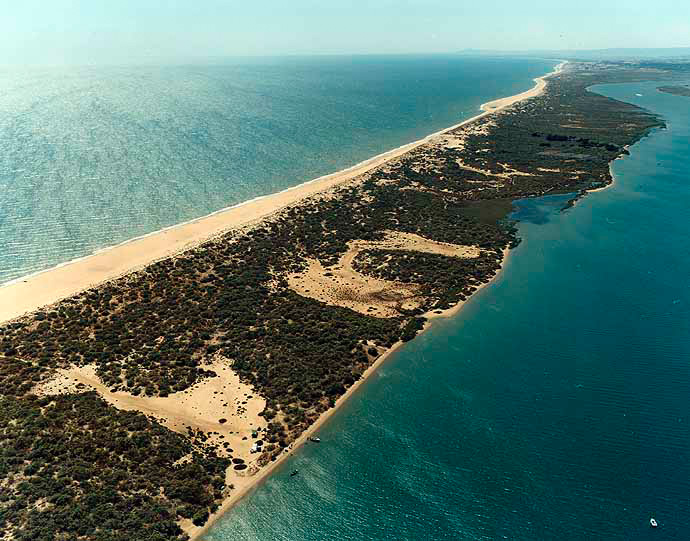
This virgin and isolated beach is located in the Natural Park of the Marismas del Río Piedras and Flecha de El Rompido. It has a length of 12 kilometers of fine golden sand and an atmosphere of peace and relaxation. This beach on the Costa de la Luz is a privilege of nature and can only be accessed on foot. It has a curious shape of a tongue joined by one of its sides to the coast: it is what is known as La Flecha. Nueva Umbría is considered a natural paradise due to the diverse ecosystems (vegetation dunes, marshes, estuaries) that converge in it.
Being a virgin beach there are no beach bars or restaurants or any other type of business around, so it is convenient to take what you need from home. It is listed as a nudist beach.
Playa El Asperillo (Almonte, Huelva)
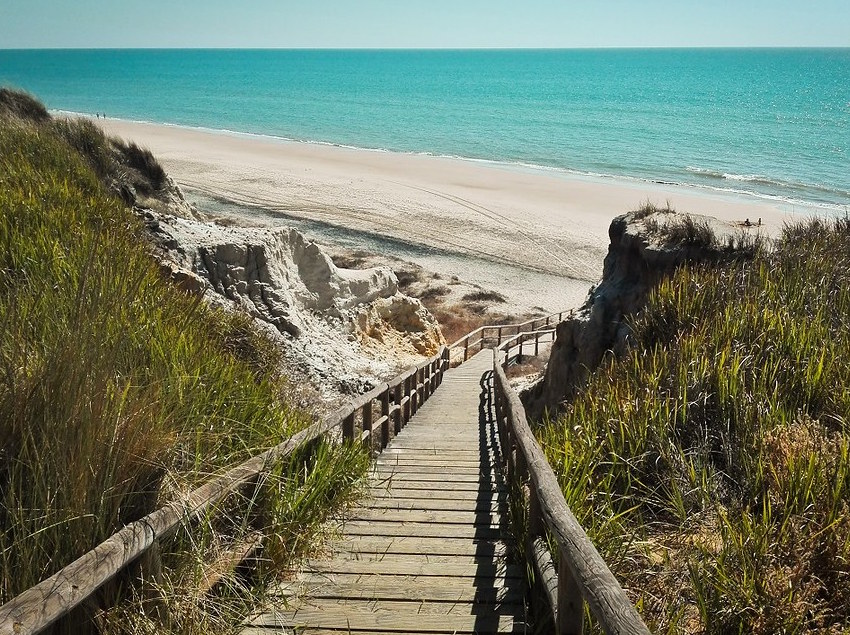
Also known as Cuesta Maneli. This virgin beach is a protected natural area in the heart of the Doñana Natural Park, between the towns of Mazagón and Matalascaña. It is accessed by a wooden walkway (at the beginning of the walkway there is a parking area) that runs between dunes of bushes and pine trees for 1.5 kilometers. This trail is known as Cuesta Maneli and on it is the Asperillo Cliff, a natural monument formed by more than 12 kilometers of fossil dunes, considered the highest cliff of this type in Europe.
On the right the atmosphere is more familiar and on the left much more relaxed. It is a pet friendly beach and, in fact, it is considered one of the best beaches for dogs in Spain. It also has a nudist area.
Accommodation and where to telework in the province of Huelva.
La Cala de Maro (Nerja, Málaga)

La Cala de Maro is a small beach with pristine water, coarse sand and stones located at the eastern end of the Costa del Sol, in the picturesque town of Nerja. It is hidden between cliffs and vegetation and has several spectacular waterfalls and underwater caves. It is one of the best beaches for snorkeling and kayaking.
Its small size (500 meters long and 20 meters wide) means that you have to go early in summer to find parking.
Playa de Cabopino (Marbella, Málaga)
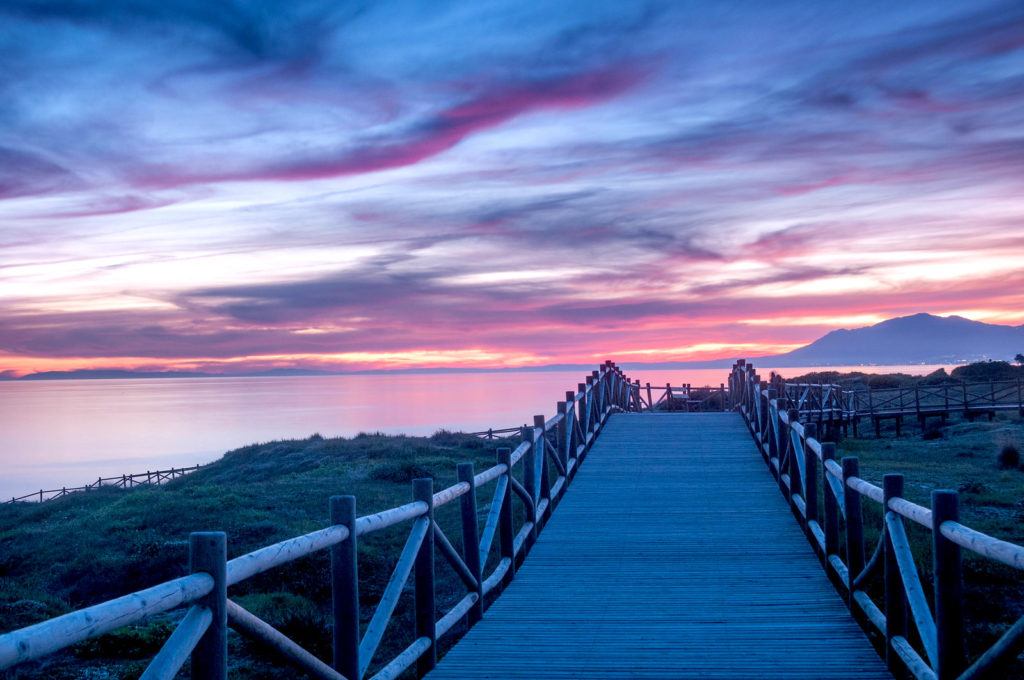
It is an isolated beach in Marbella where you can feel a great connection with nature thanks to its landscape of dunes with native vegetation such as sea daffodils or junipers. It is located next to a protected natural area, Las Dunas de Artola, a natural setting in the heart of the Costa del Sol, adjacent to the Cabopino marina.
Being a bit far from the center of town, it is usually less crowded than others in Marbella.
It has a length of 1,200 meters of golden sand and 30 meters wide, and some nudist sections.
Around you can do several easy routes through the Dunas de Artolas (they are signposted) if you want to combine a day at the beach and hiking.
Accommodation and where to telework in the province of Malaga.
Contact us
If you need any more information regarding beaches in Andalucia, do not hesitate to contact our team:





